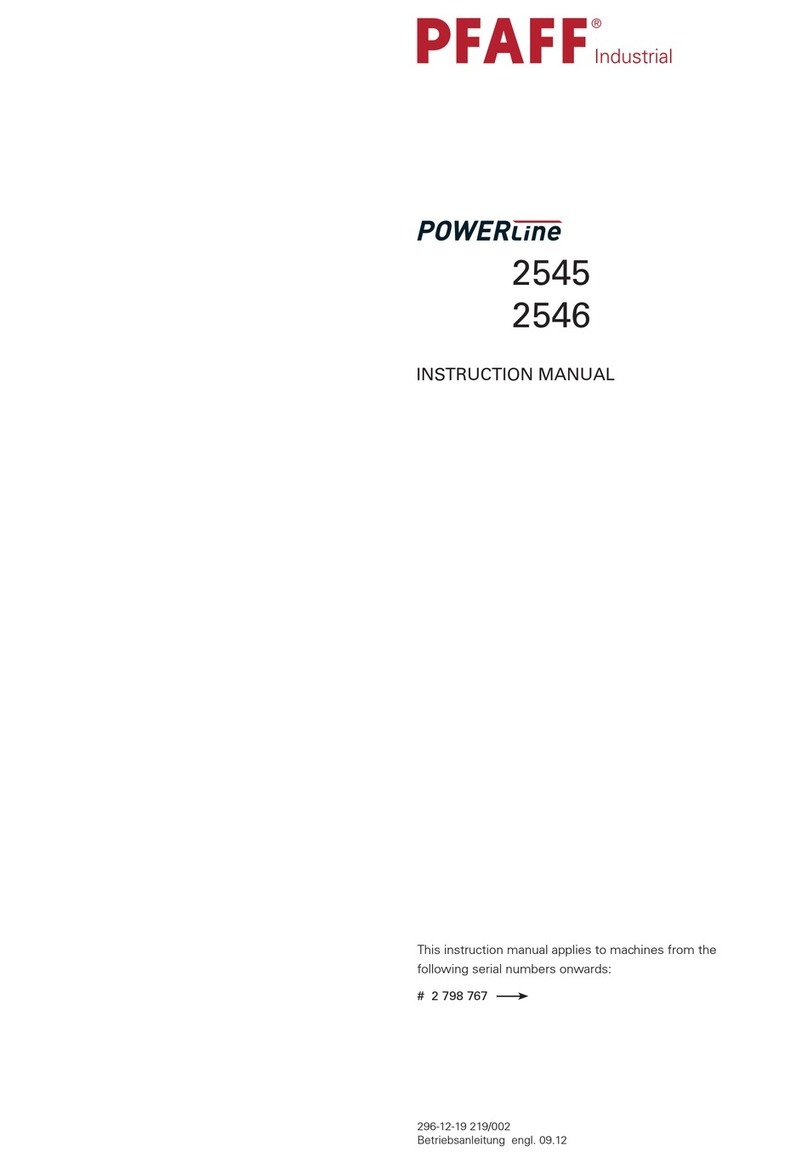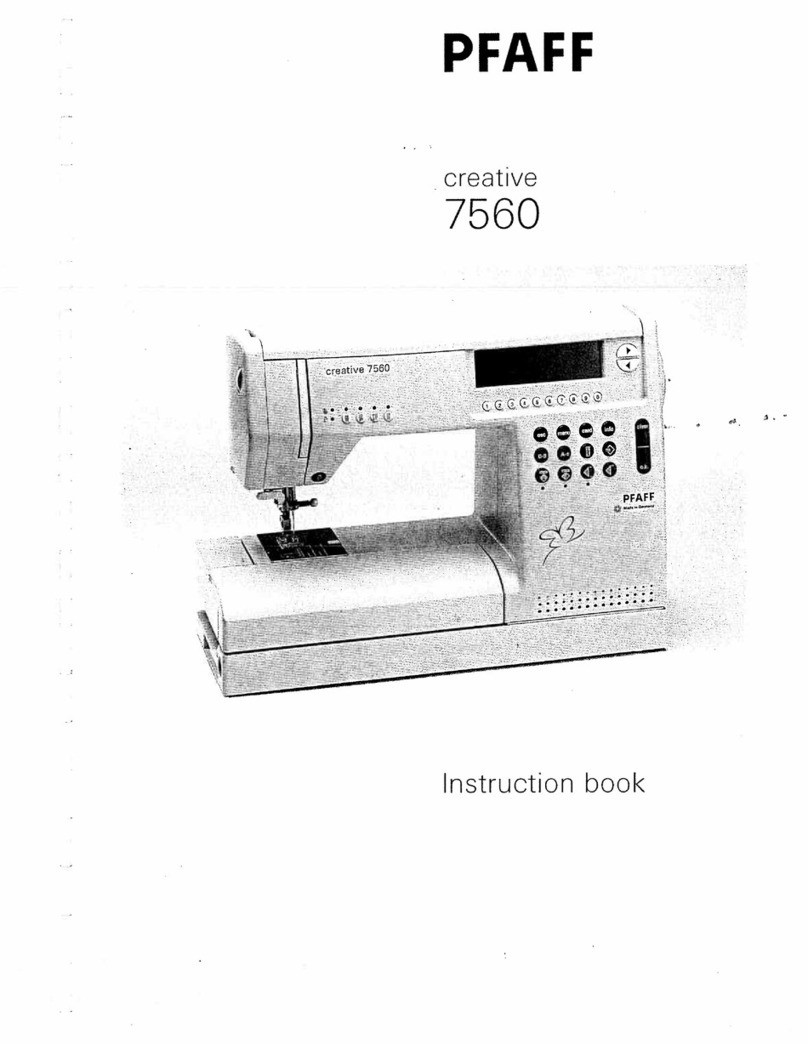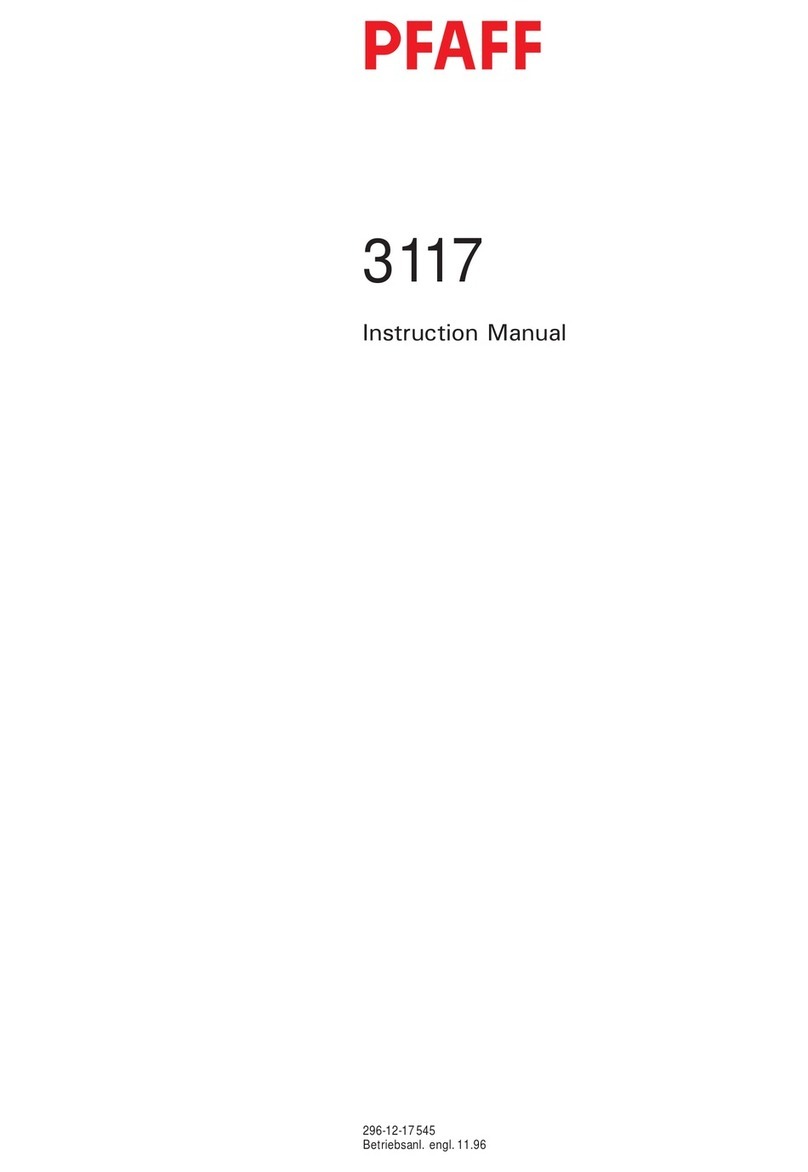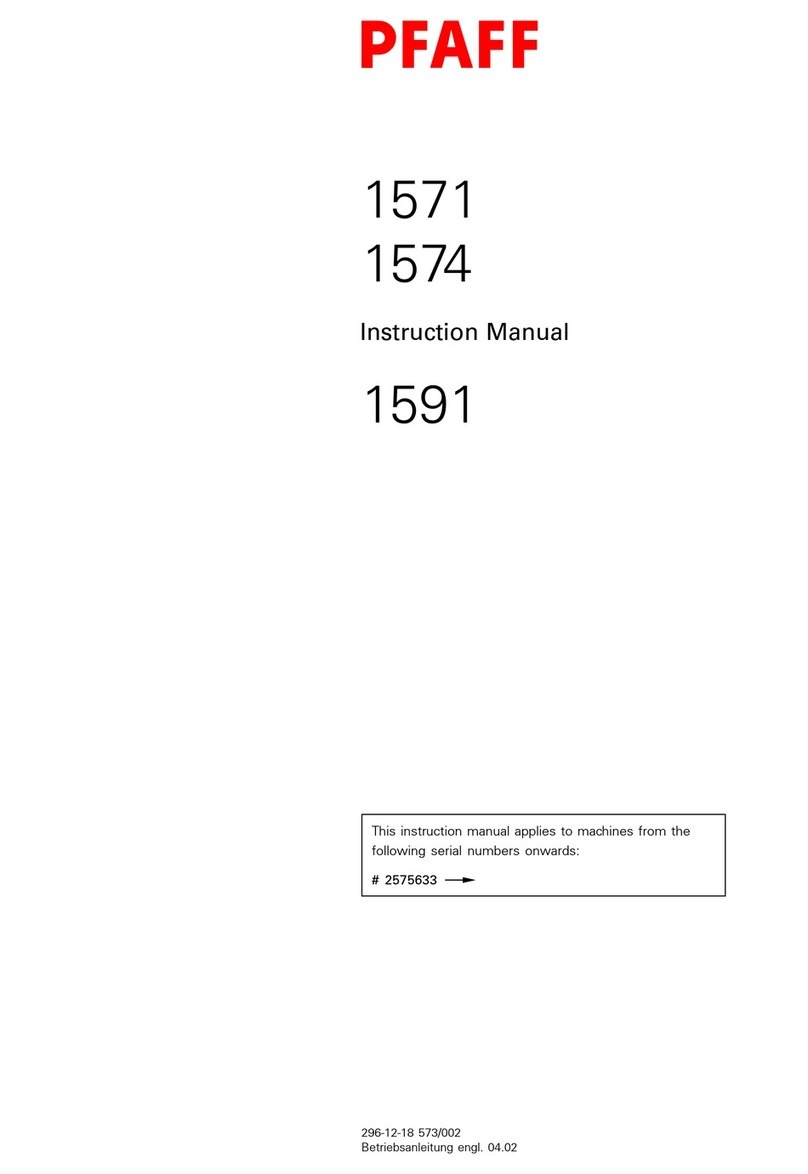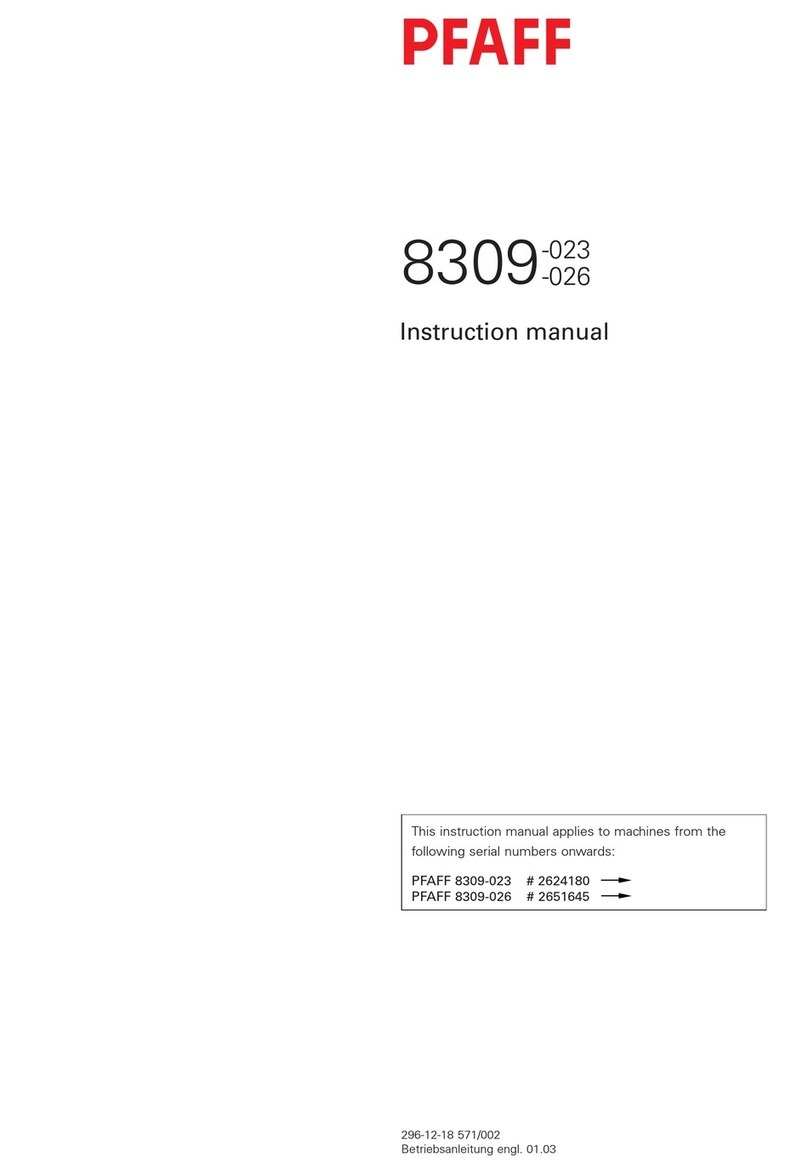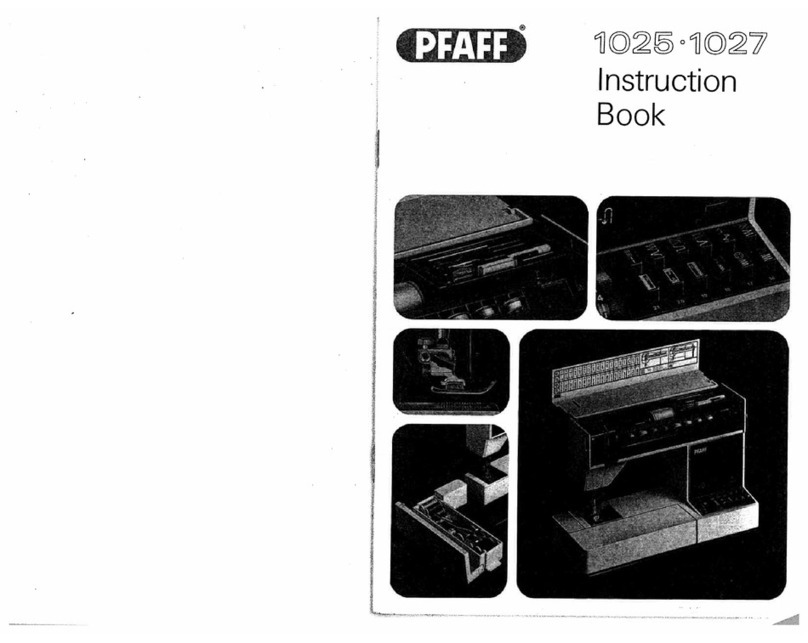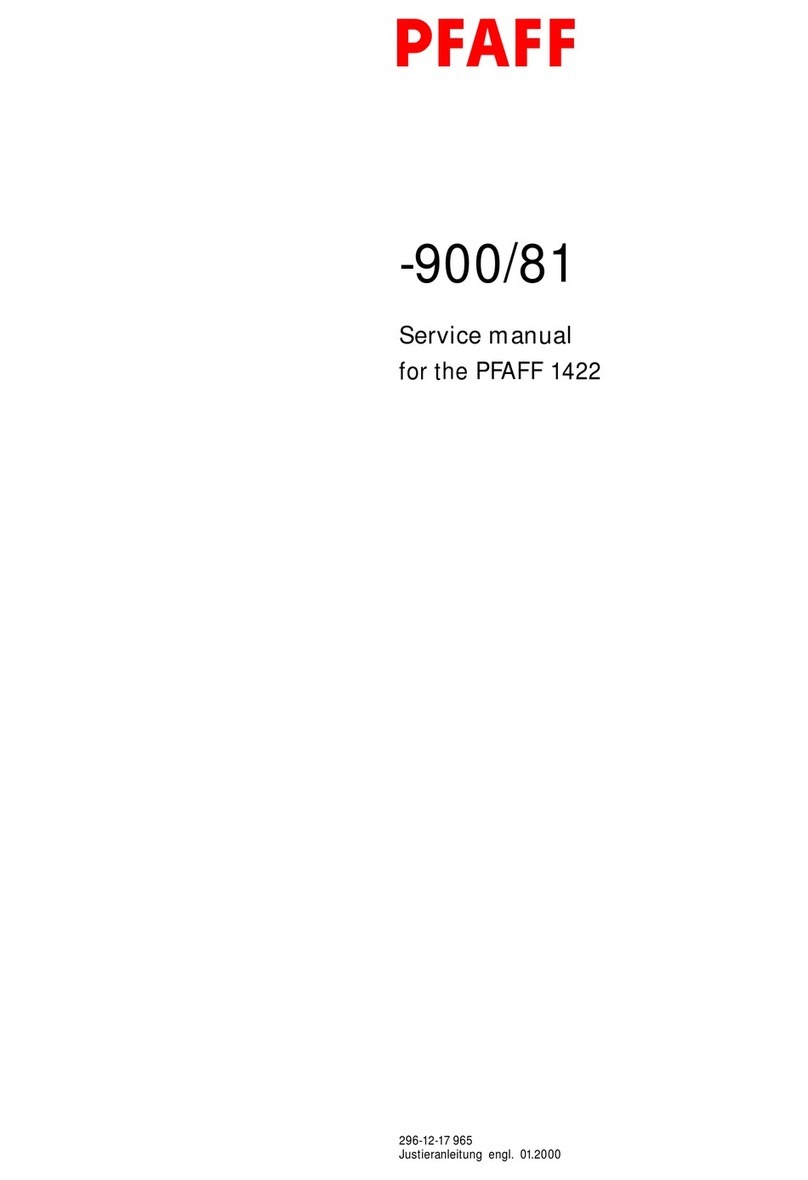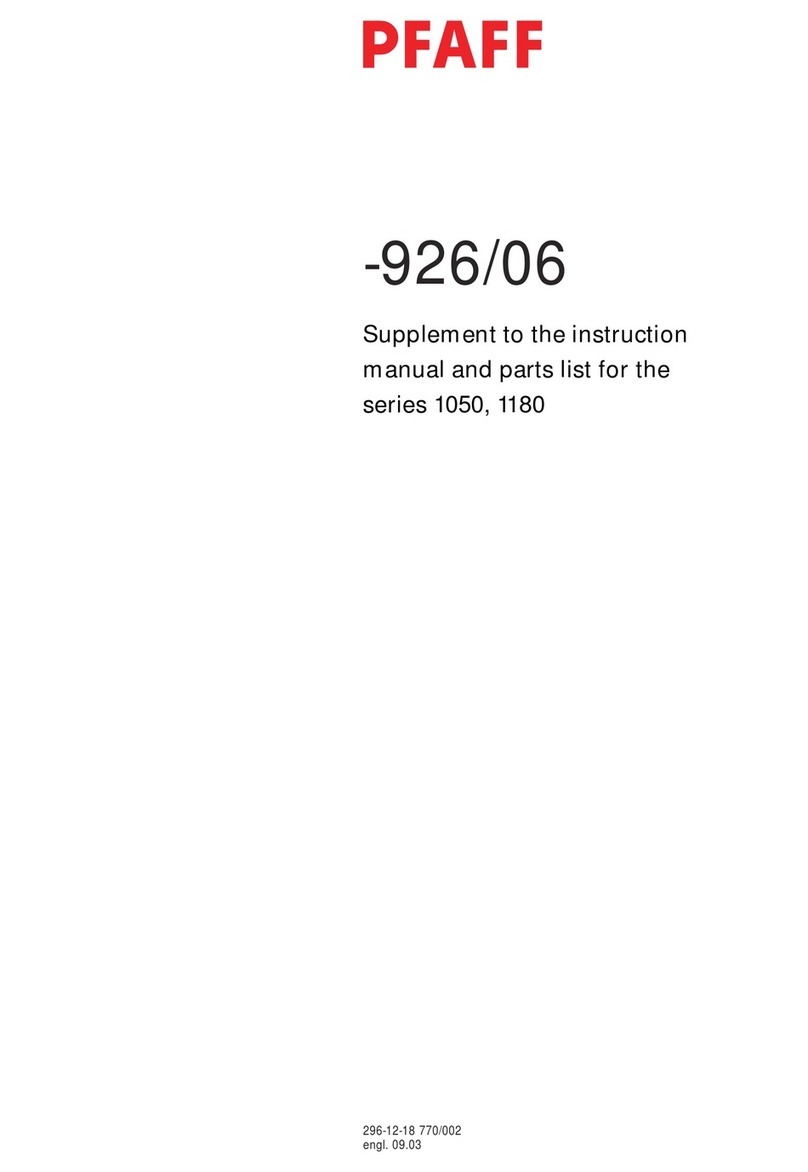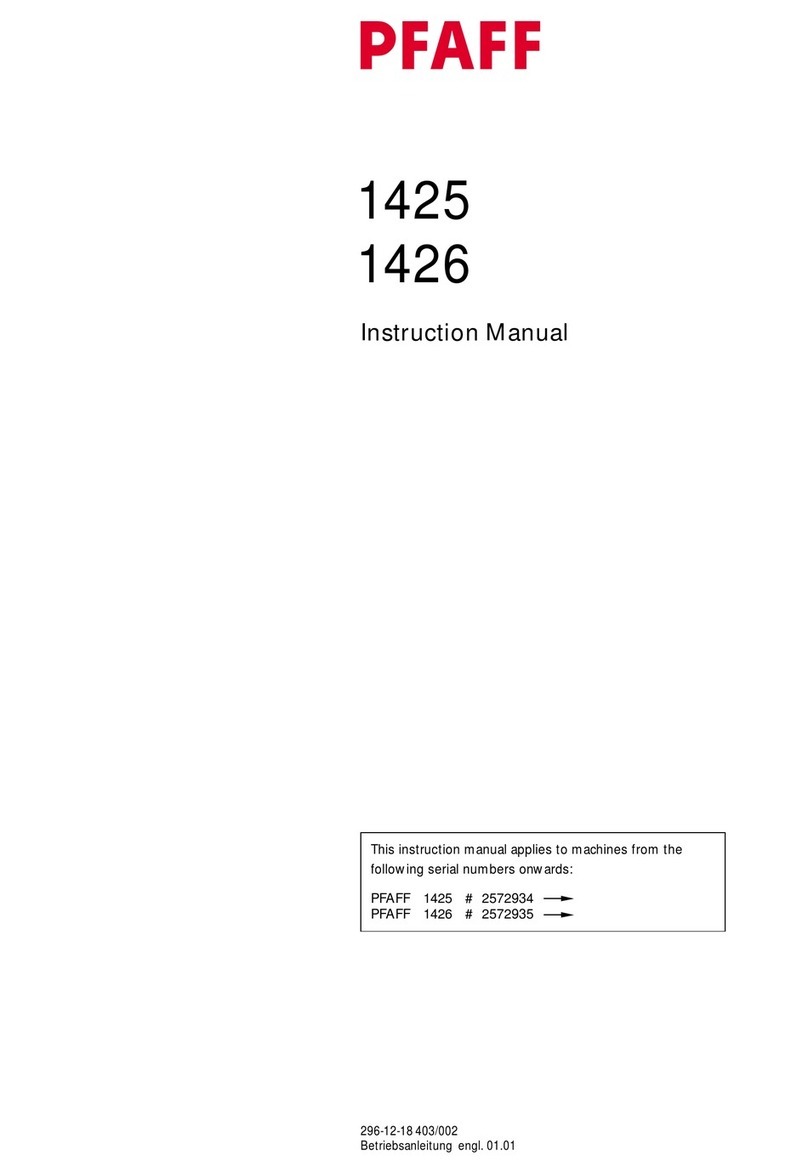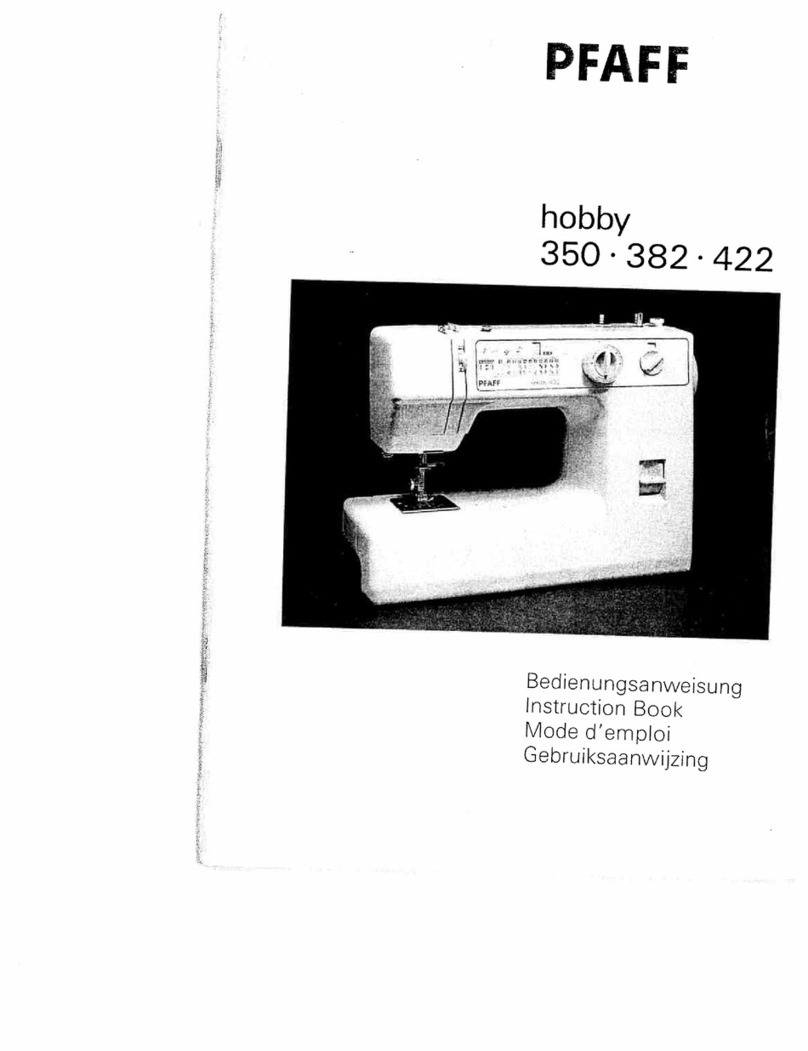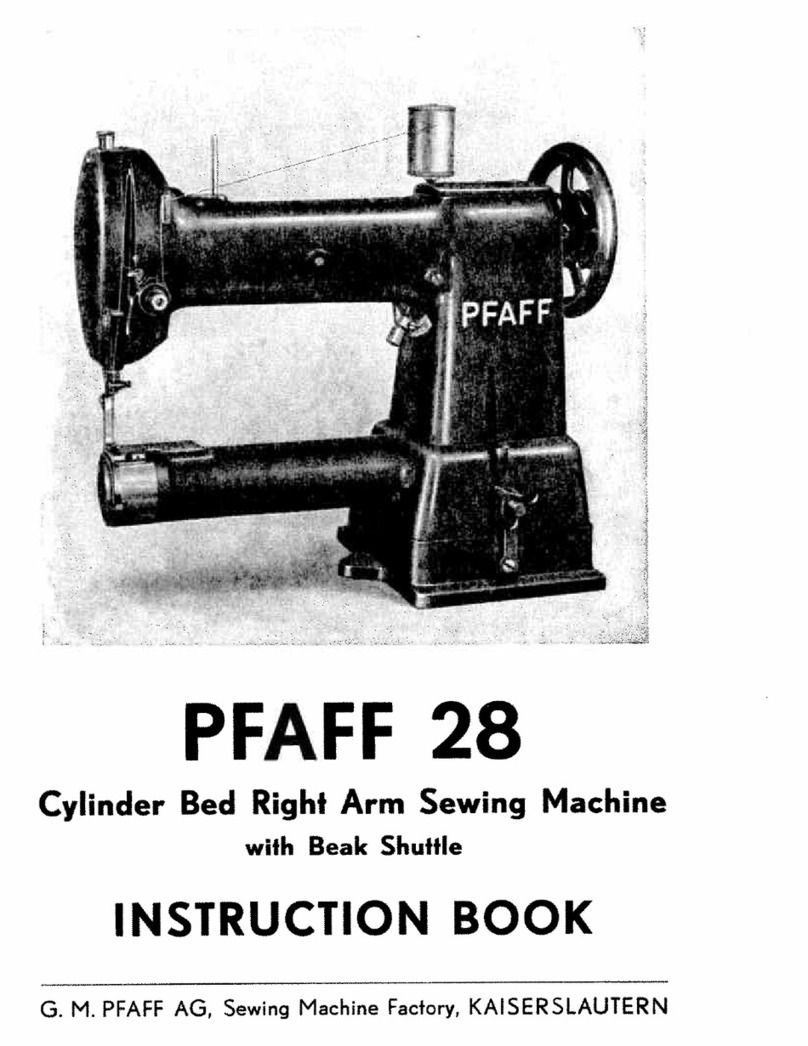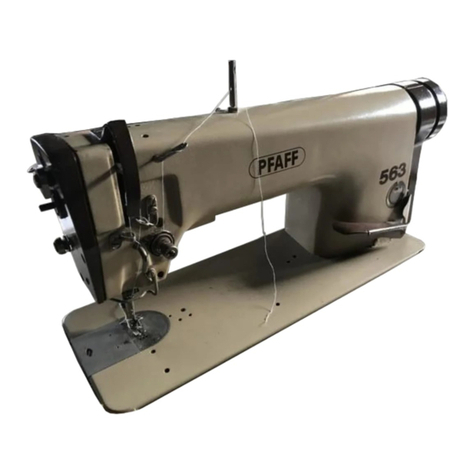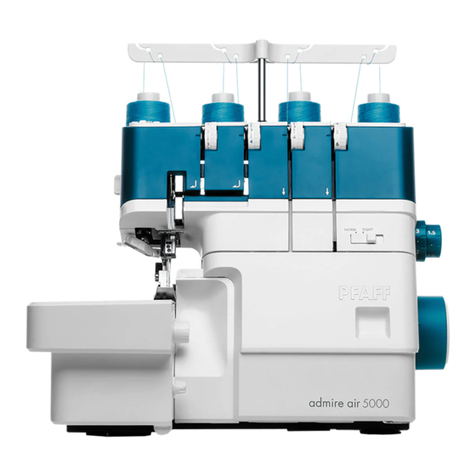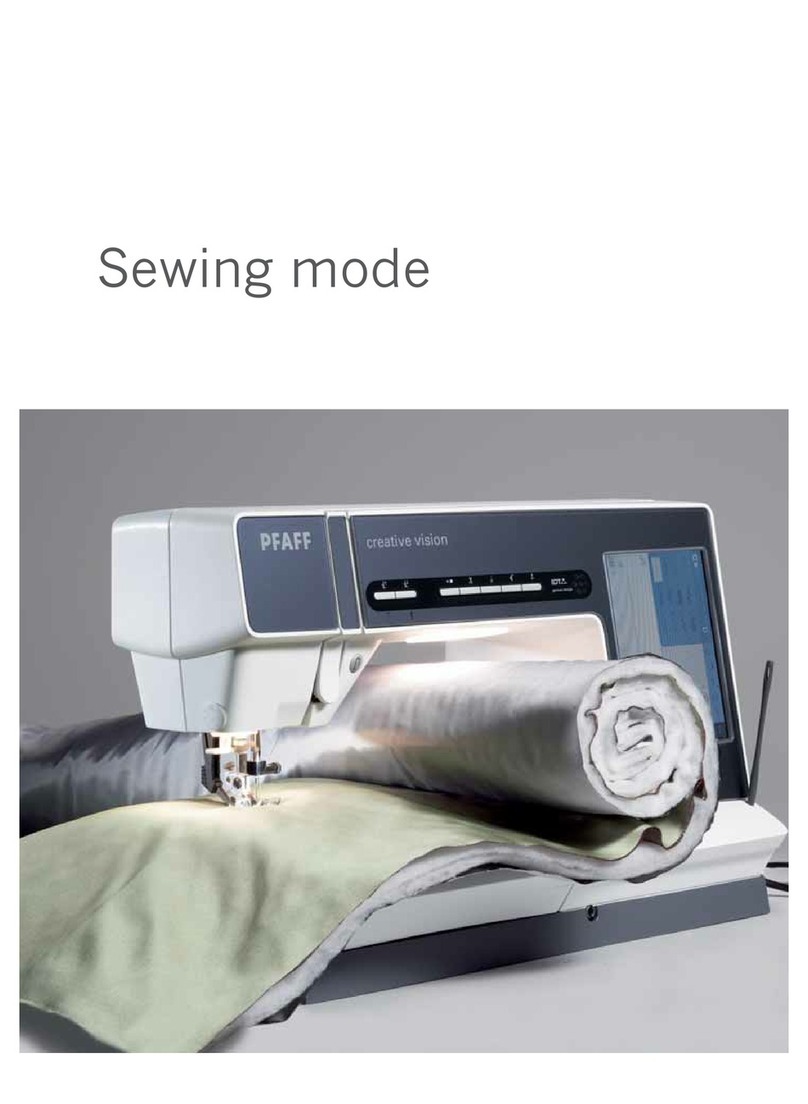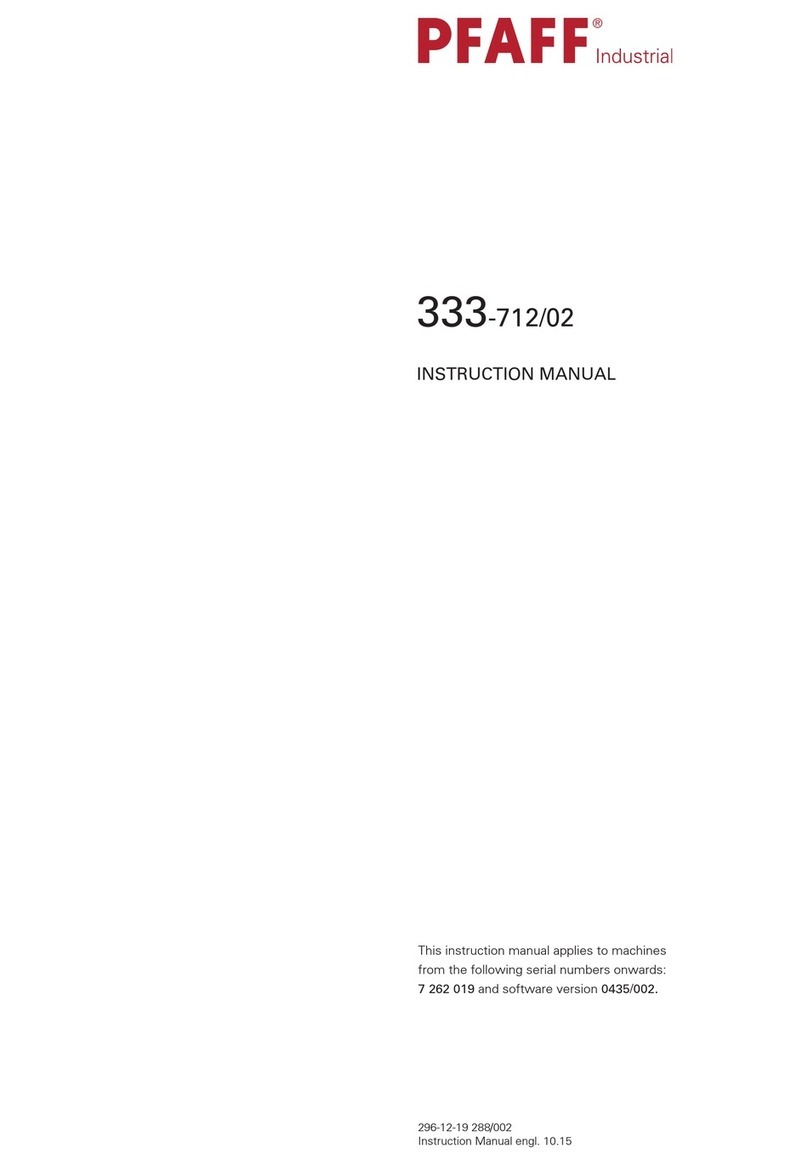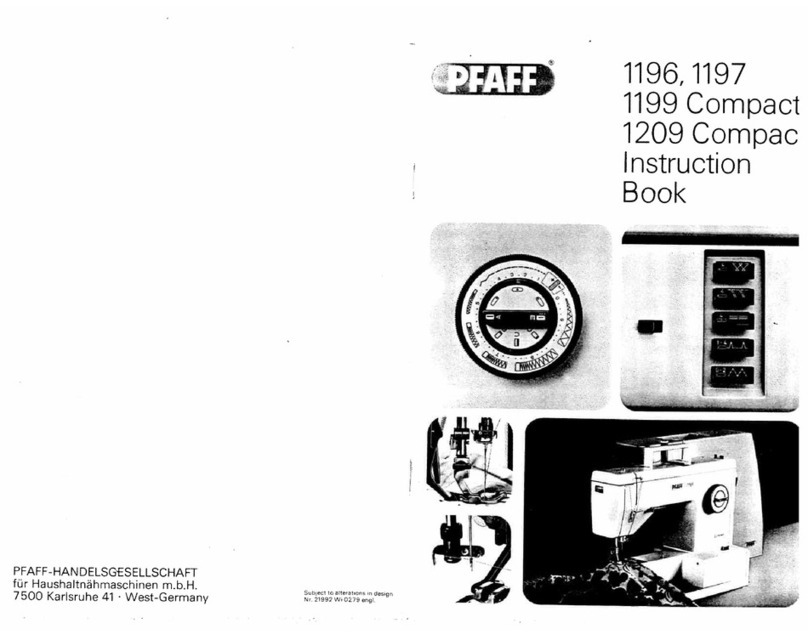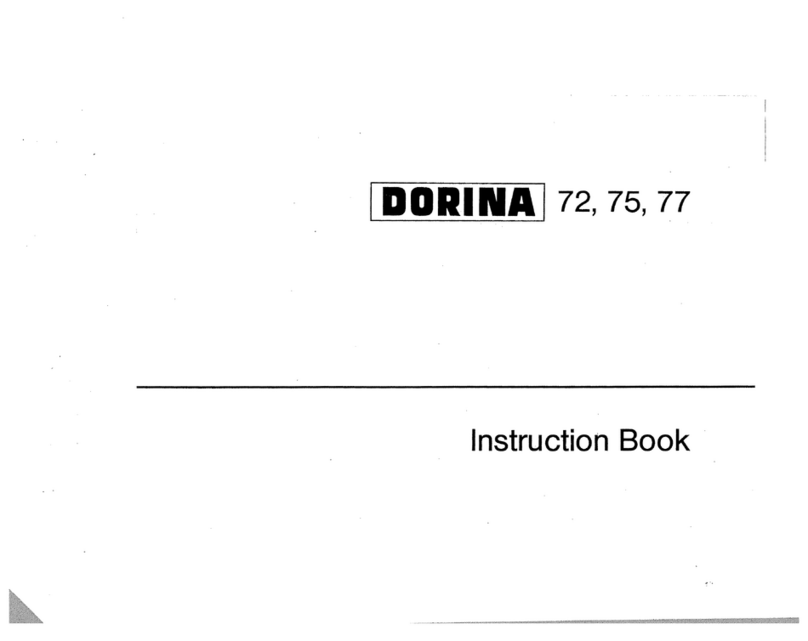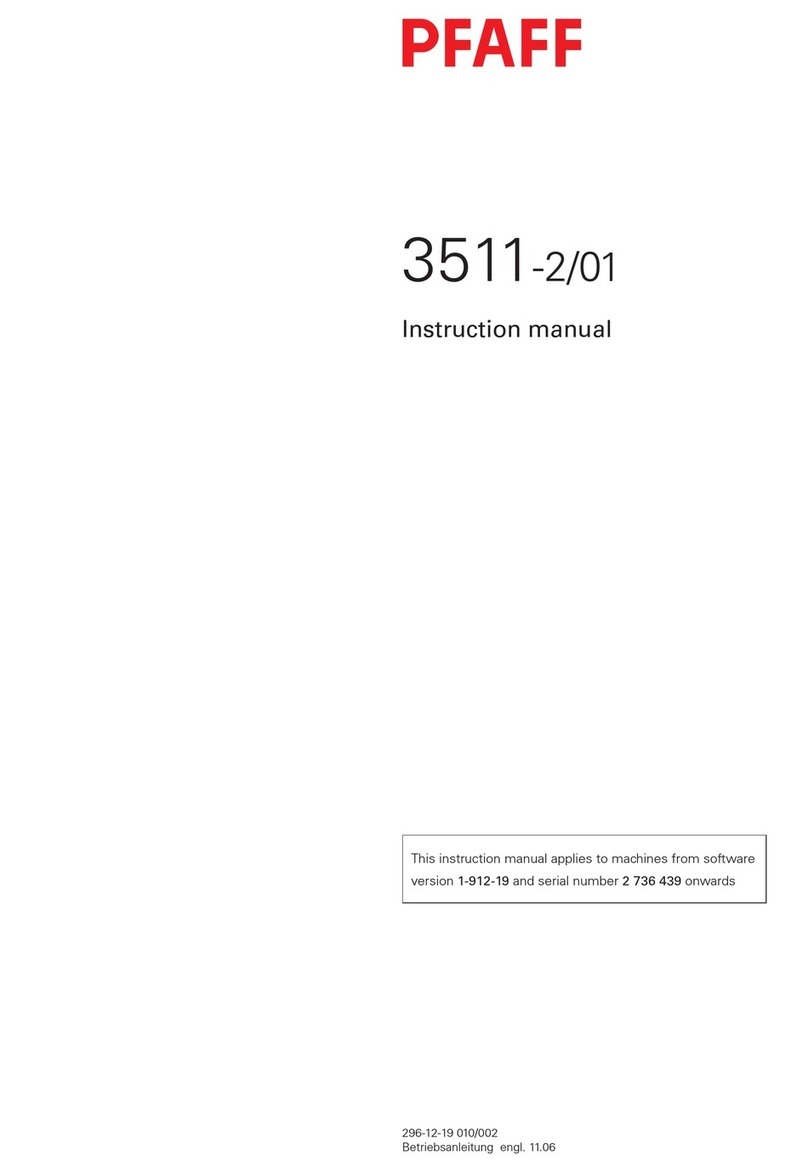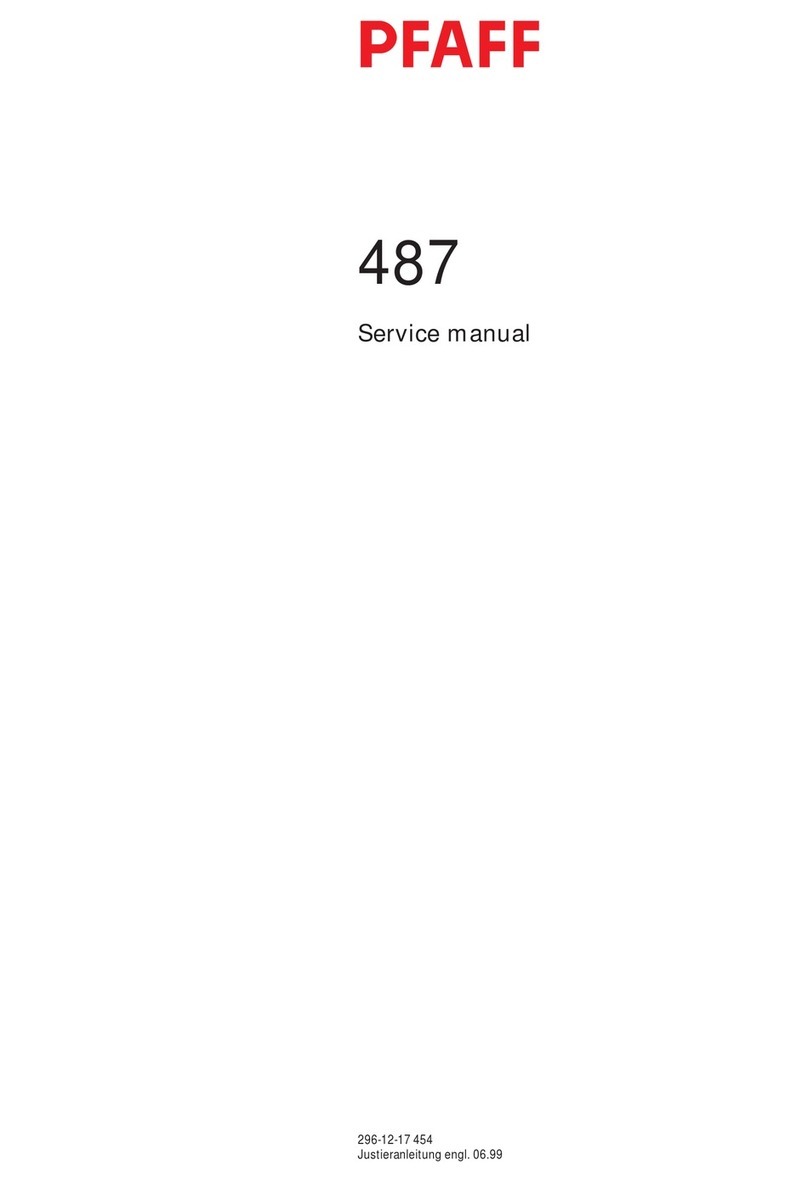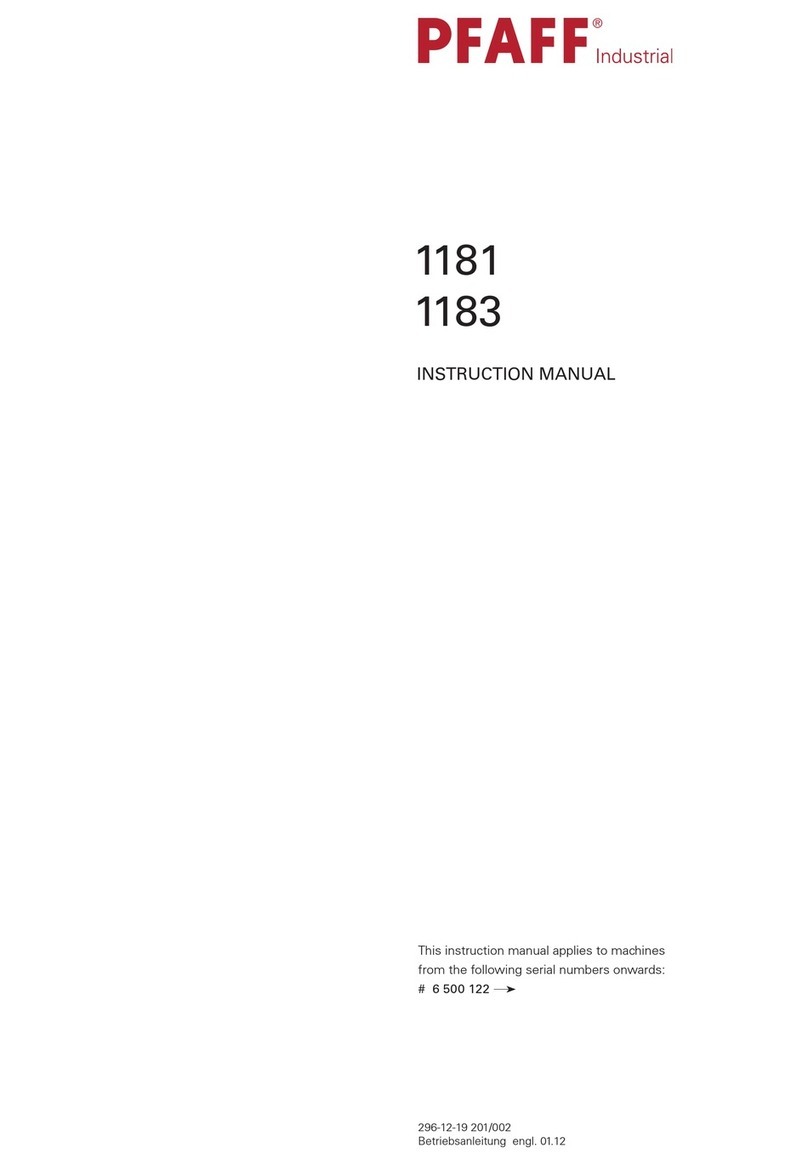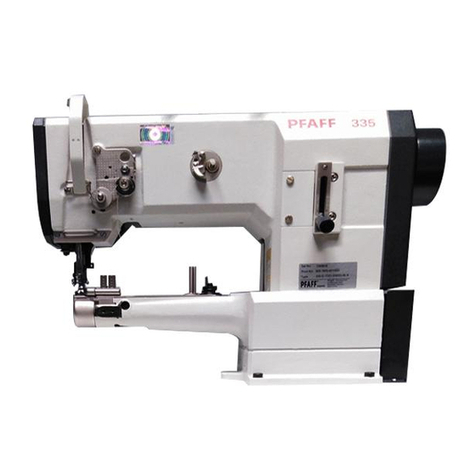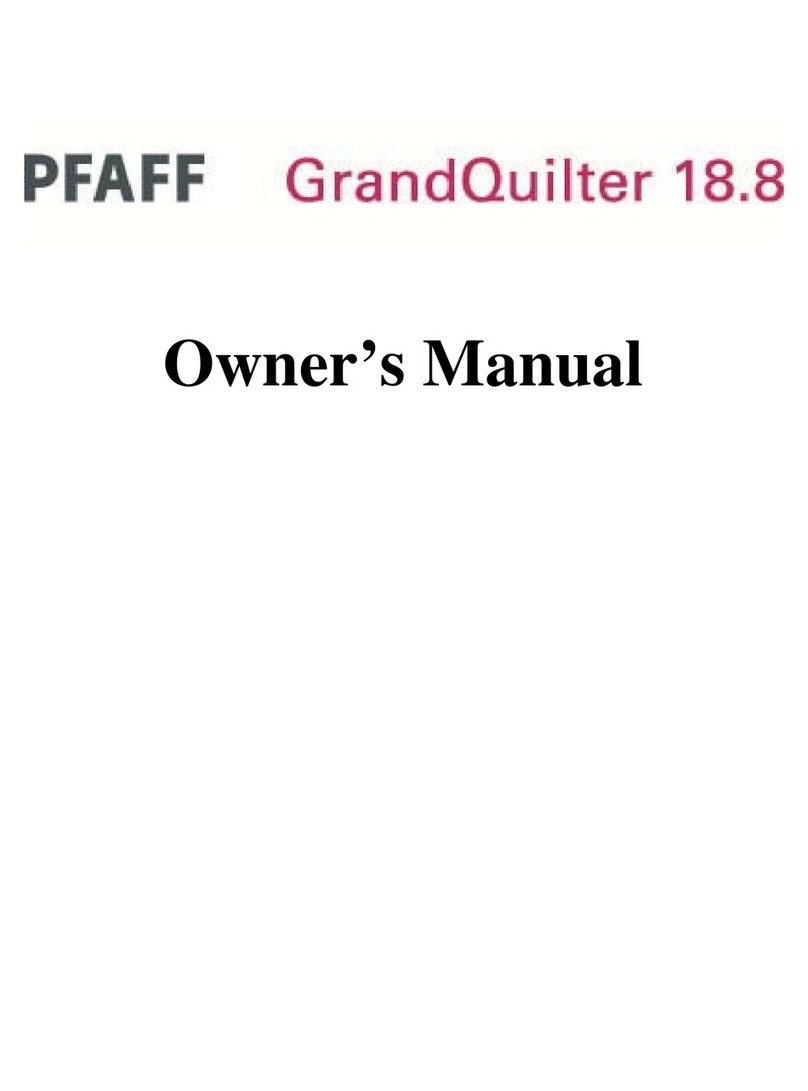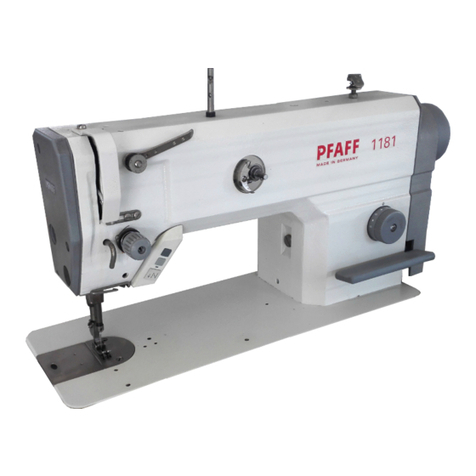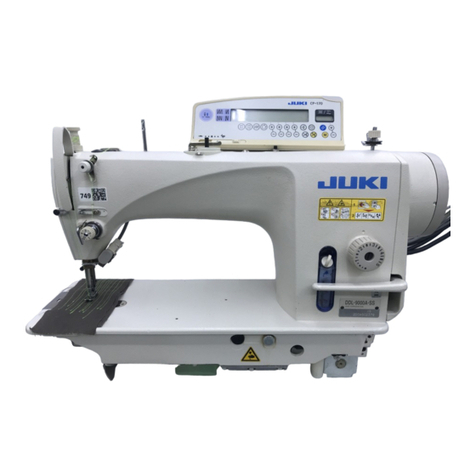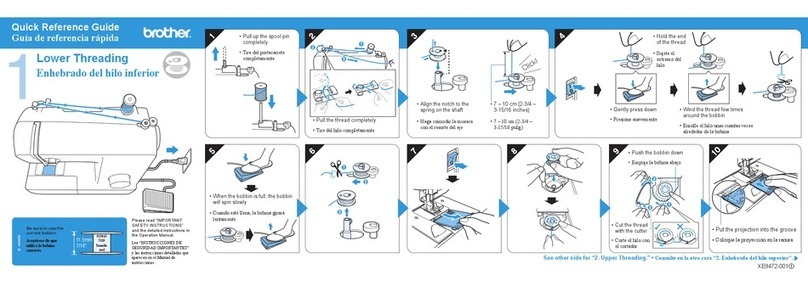Congratulations!
Congratulations on purchasing your new PFAFF®sewing machine. As a sewing enthusiast, you
KDYHDFTXLUHGDPDFKLQHWKDWIHDWXUHVWKHYHU\ODWHVWLQERWKGHVLJQDQGWHFKQRORJ\HQDEOLQJ
you to transform your creative ideas into reality.
%HIRUH\RXVWDUWSOHDVHVSHQGVRPHWLPHUHDGLQJWKLVRZQHU·VPDQXDO<RXZLOOVRRQGLVFRYHU
how to maximize the use of your machine. Our authorized PFAFF®dealer will of course also be
pleased to advise you as well.
<RXU3)$))®ambition™1. 0 VHZLQJPDFKLQHZLOOGHÀQLWHO\HQDEOH\RXWRH[SHULHQFHDWRWDOO\
new dimension of sewing!
Table of contents
Introduction 6
Machine overview ............................................................6
Accessories.........................................................................8
Stitch overview..................................................................9
Alphabets .........................................................................11
Preparations 13
Unpacking........................................................................13
Connect to the power supply ..................................13
Pack away after sewing..............................................13
Free arm...........................................................................14
Leveling the machine base plate ...........................14
Mounting machine in sewing cabinet..................14
Thread cutter..................................................................14
Spool pins........................................................................14
Threading the machine..............................................15
Needle threader ............................................................ 16
Threading for twin needle........................................... 16
Bobbin winding .............................................................17
Inserting the bobbin....................................................18
IDT™system (integrated dual feed) ......................18
Presser foot pressure..................................................19
Thread tension...............................................................19
Needles .............................................................................20
Changing the needle ...................................................21
Lowering feed dogs......................................................21
Presser foot lift ..............................................................21
Changing the presser foot ........................................21
Buttons..............................................................................22
Graphic Display .............................................................23
Settings.............................................................................24
Sewing 25
Sewing mode - overview............................................25
6HOHFWDVWLWFK ................................................................. 25
Stitch information ........................................................25
Stitch adjustments.......................................................26
Tie-off options................................................................28
Save personal stitch ....................................................29
Load personal stitch....................................................29
Main motor overload...................................................29
Sewing techniques.......................................................30
Three-step zigzag stitch............................................... 30
Buttonholes.................................................................... 30
6HZRQDEXWWRQ ............................................................ 31
Darning and mending ................................................. 32
6HZLQJKHPVLQKHDY\IDEULF ...................................... 32
Quilting.......................................................................... 33
Blindhem........................................................................ 34
6HZLQJLQ]LSSHUV ......................................................... 34
Sequencing 35
Overview ...........................................................................35
Create a sequence........................................................35
Manage your sequences............................................38
6DYHVHTXHQFH ............................................................... 38
/RDGVHTXHQFH............................................................... 38
Sewing a sequence ......................................................38
Maintenance 39
Cleaning the machine.................................................39
Replacing the stitch plate .........................................39
Troubleshooting.............................................................40
Intellectual property ....................................................43
